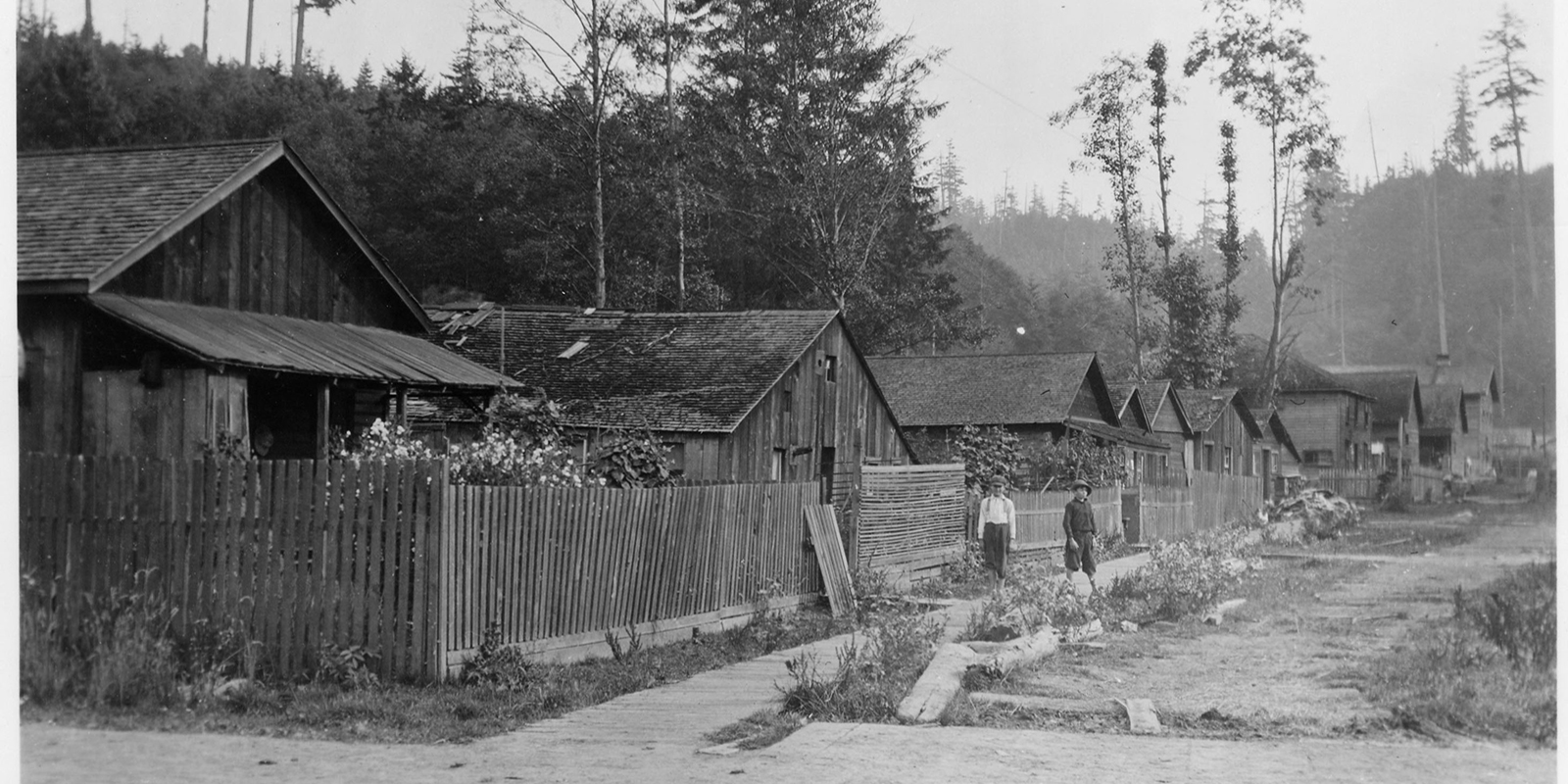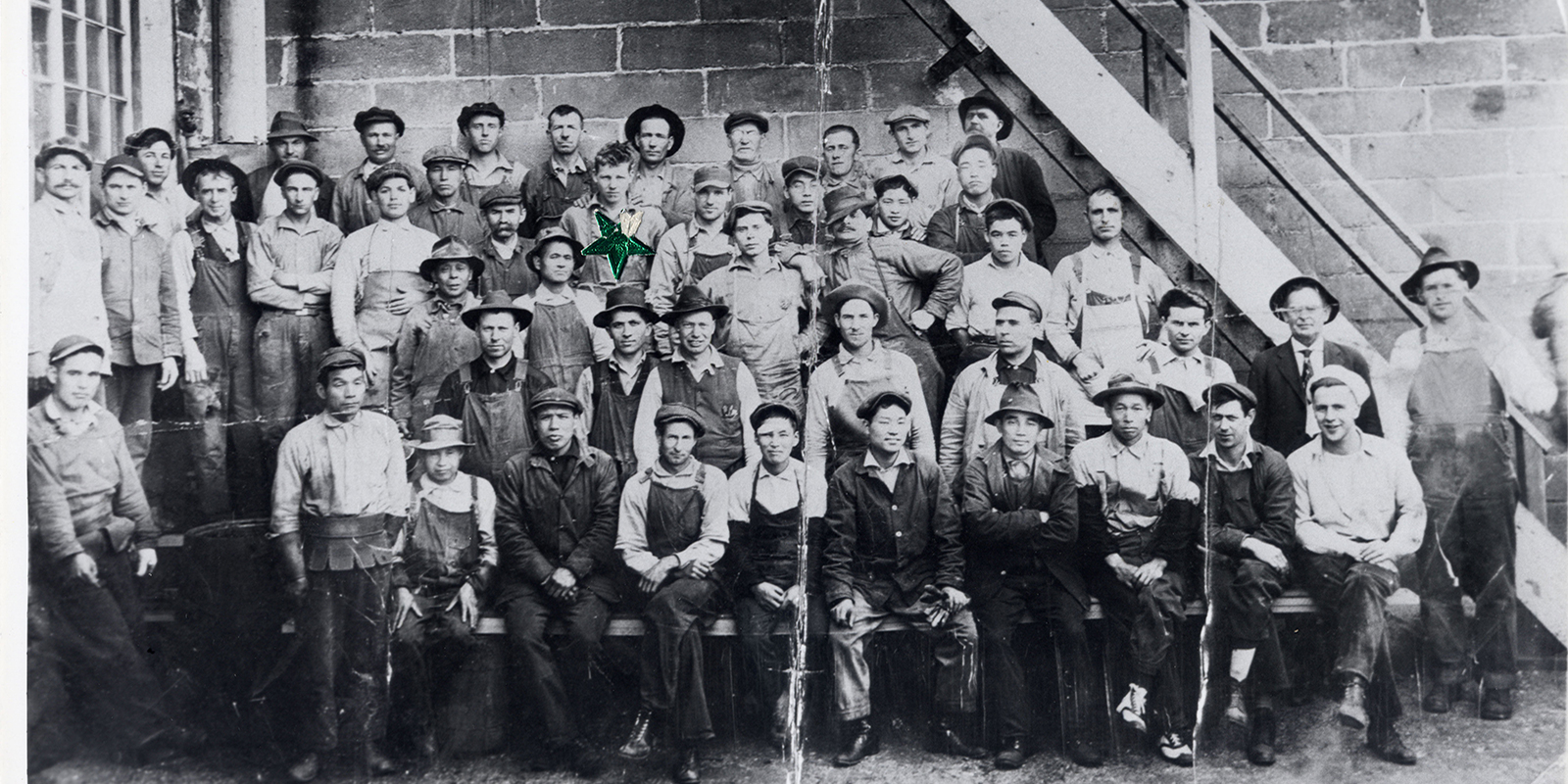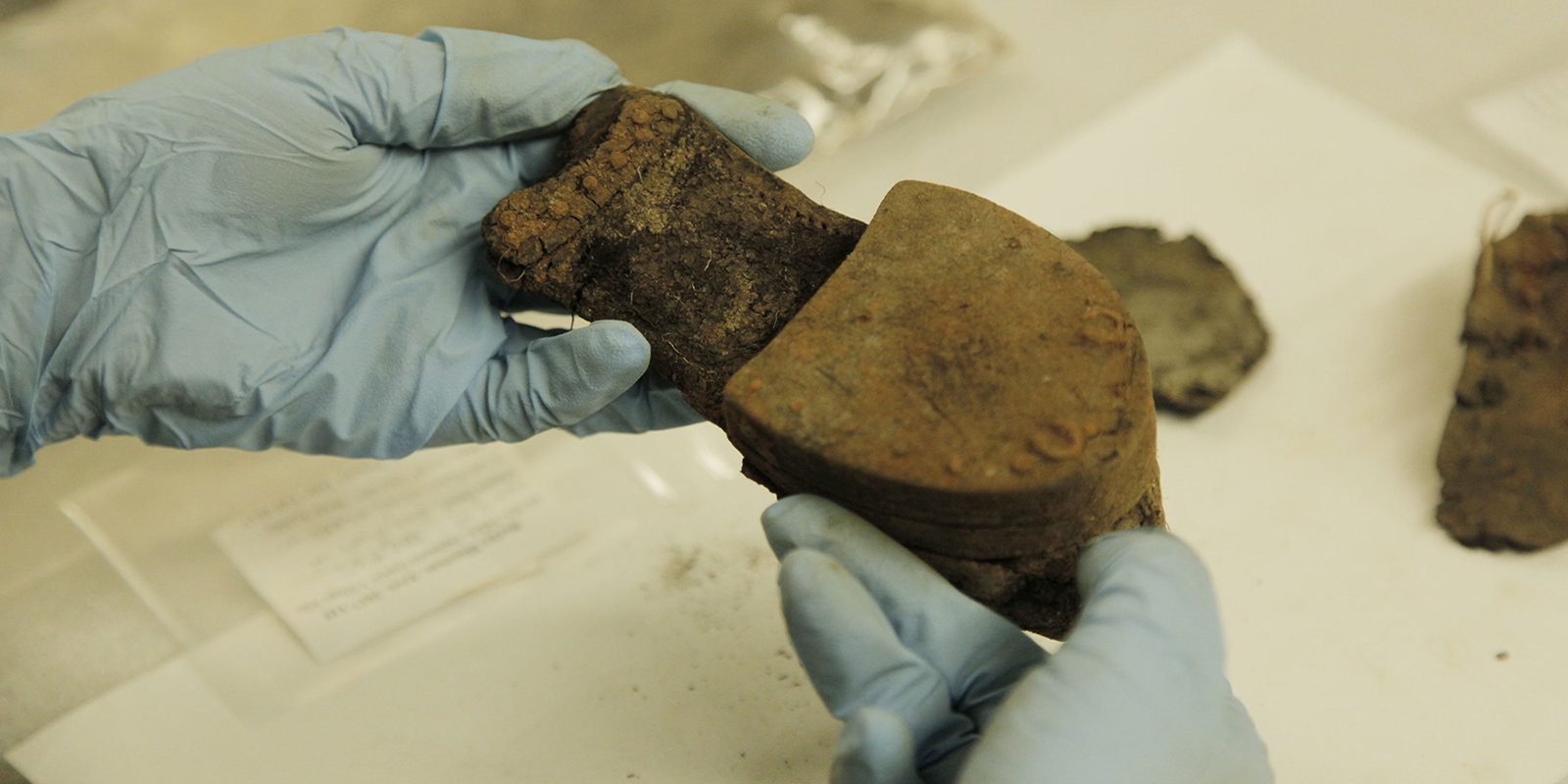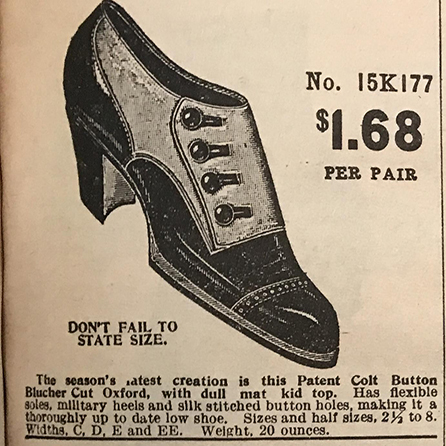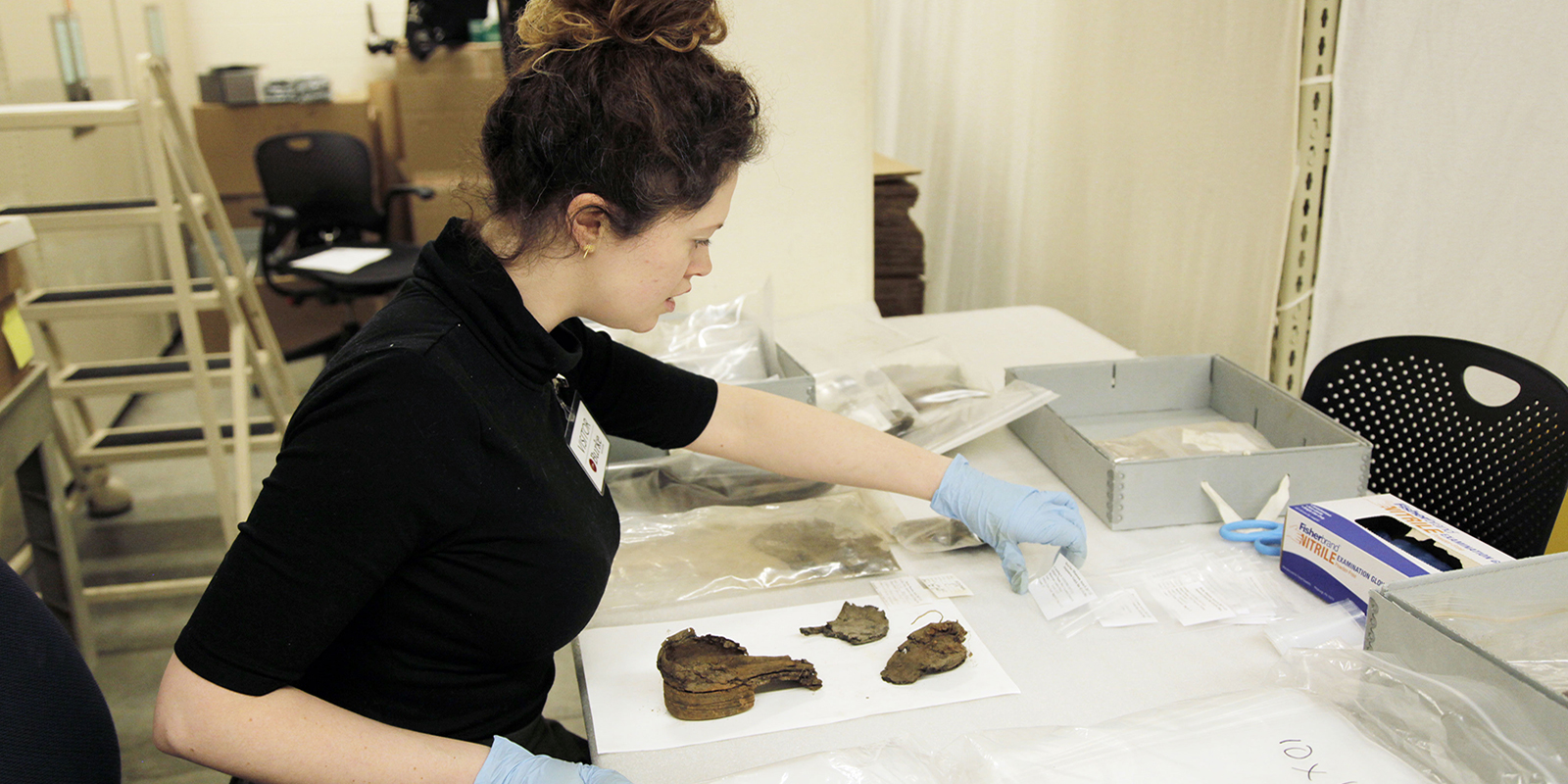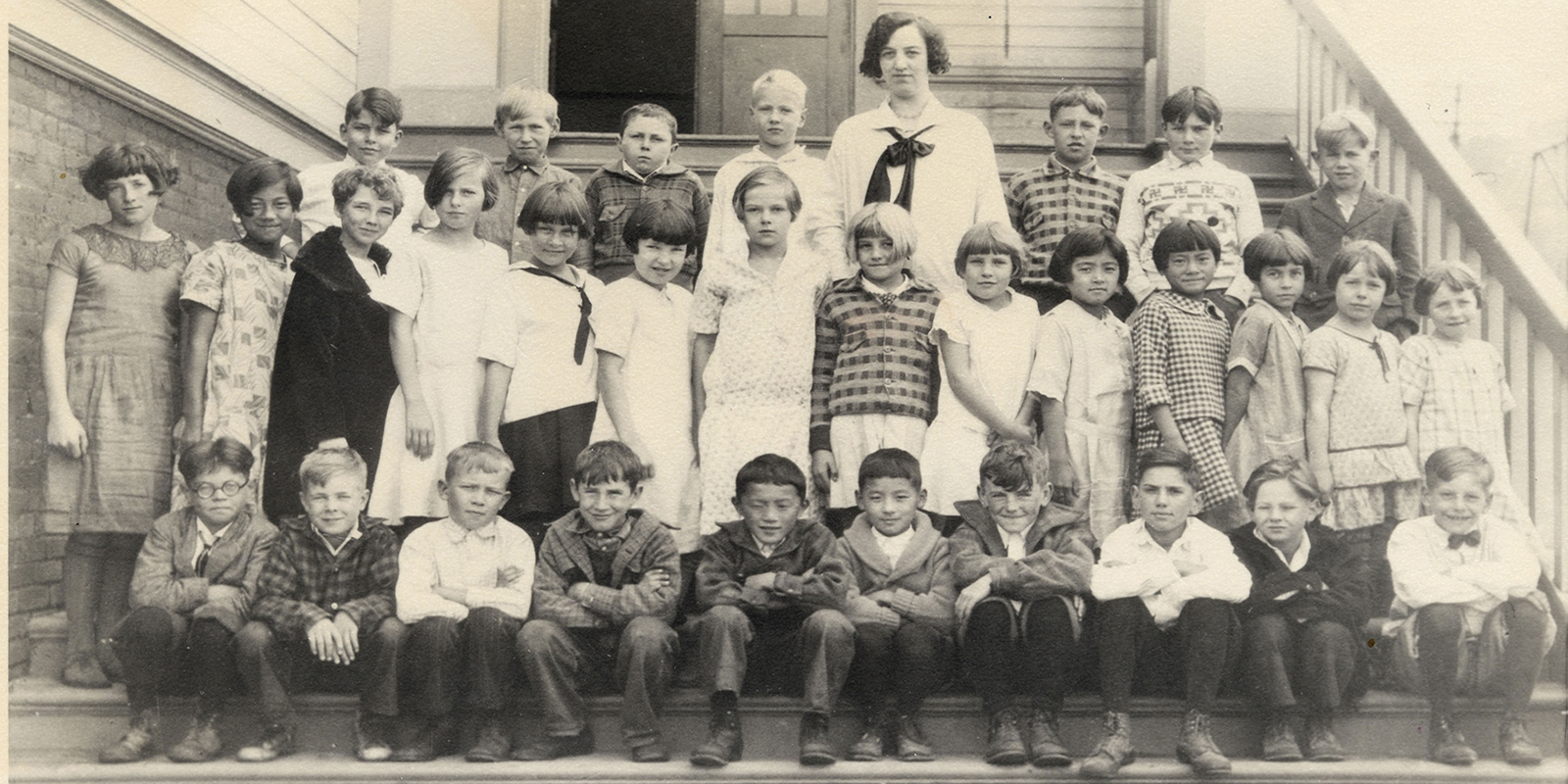Posted: January 26, 2018
The Burke Museum recently received a collection of hundreds of artifacts from Japanese Gulch, an archaeological site near Mukilteo which was a community of Japanese lumber mill workers and their families in the early 1900s. The collection includes a wide range of artifacts, including household items like glass bottles, ceramic dishware, metal and glass fixtures, nails, and leather artifacts, including many shoes. This collection gives us an insight into the daily lives of this community.
About Japanese Gulch
Hiring Japanese workers for hard labor in mills, farming, and railroad industries was not uncommon in the Pacific Northwest. Japanese workers were an integral part of building these industries in Tacoma, Snoqualmie Falls, Port Townsend, Wenatchee, and Enumclaw to name a few.[i] Laborers living at Japanese Gulch were employed by the Mukilteo Lumber Company, which was later renamed the Crown Lumber Company.
Unfortunately, Japanese immigrant workers were frequently subjected to hostility and discrimination throughout the region. At Mukilteo, Japanese workers were initially met with concern by Caucasian mill workers who threatened to strike, as well as the larger Mukilteo community.[ii] However, the hiring of Japanese immigrants to work at the mill continued, and consequently the community in Japanese Gulch grew to include workers’ families. Census documents indicate that the community of Japanese Gulch was predominantly men in 1910, but by 1920 women and children were living within the community.[iii]
Historical and oral accounts, as well as archaeological evidence, all suggest that Japanese Gulch residents purchased goods from Japan or Japanese merchants, utilized the natural resources around them, and shopped from the Crown Company Store.[iv]
The economic decline in the late 1920s led to the closing of the Crown Lumber Company in 1930, and as a result, population of the Japanese Gulch rapidly declined as workers moved out of the area to look for work elsewhere.[v]
History as told by the shoes we wear
There were a few goals I had in mind when I sat down with the collection. I hoped to identify examples of different shoe construction, styles of shoes, and evidence of repair. This proved challenging due to the state of the artifacts after being buried for so long.[vi]
However, with these two well preserved artifacts we can identify this men’s style shoe (top left), and this women’s shoe (top right). Both artifacts exhibit mechanized shoe manufacturing, which had become common in the early-to-mid 1900s after being developed in the United States.[vii] There are also stylized decorations present on the toe portion of both. This information tells us that residents of Japanese Gulch had both the means and the access to modern western middle class goods, and chose to accumulate them.
Frequently in archaeology, we will not have an intact artifact. Only a fragment of a ceramic bowl, or the head of a nail, or only the toe of the shoe remains after years of exposure. I chose to focus on a handful of artifacts: those that were full shoes, complete soles, those with decoration, or any uniquely-identifying features. Above we see four black glazed buttons from Japanese Gulch; using historical records of advertising we can see how they may have looked and functioned on a shoe.
To examine the artifacts, I took detailed measurements and photographs- handling them with care, as the leather artifacts are fragile and already deteriorating. To help preserve these artifacts for years to come, I packaged them in special archival housing to prevent contact, control humidity, and ensure safe handling. I also replaced original tags with acid-free ones, and separated loose objects into separate bags so that they could not create further damage.
Many moving parts, and future research
My first experience with an archaeological collection, including these preservation and research techniques, was with the Japanese Gulch collection. This opportunity came through the Learn and Serve Environmental Anthropology Field school (LEAF) which partook in one phase of research and analysis of this dynamic site.
Due to the many different phases of excavation, the Burke has a portion of the larger collection; while other parts of the collection are housed with other research partners including the City of Mukilteo, and Edmonds Community College. It has been nice to come back to collection from this site and expand my experience.
What struck me as interesting about the collection, then and now, was that shoes can have an intimate feel to them, especially when holding the shoes of small children.
Ultimately, these leather shoe artifacts are only one part of a larger collection, just as shoes today make up a small part of our daily lives and choices. But when examined, and then understood within the larger context of the collection, we can better understand the daily lives of those of the Japanese Gulch community. Currently, research is being conducted by archaeologists and historians on various aspects of this collection, as well as similar archeological collections from other Japanese community sites. I look forward to seeing what can be learned down the road.
---
References:
[i] White III, Willian A., Sharon Boswell, and Christian J. Miss. "Results of Data Recovery and Site Evaluation Excavations at the Japanese Gulch Site 45SN398 Mukilteo, Washington". Prepared for Sound Transit. (Seattle: Northwest Archaeological Associates, Inc., 2009), 14.
[ii] White III, Willian A., Sharon Boswell, and Christian J. Miss. "Results of Data Recovery and Site Evaluation Excavations at the Japanese Gulch Site 45SN398 Mukilteo, Washington". Prepared for Sound Transit. (Seattle: Northwest Archaeological Associates, Inc., 2009), 14-16.
[iii] Valentino, Alicia, Sherry Boswell, and Brandy Risnick. "Cultural Resources Assessment for the Japanese Gulch Fish Project, Mukilteo, Snohomish County, Washington". Prepared for the City of Mukilteo. (Seattle: Northwest Archaeological Associates/ SWCA, 2011): 11.
[iv] White III, Willian A., Sharon Boswell, and Christian J. Miss. "Results of Data Recovery and Site Evaluation Excavations at the Japanese Gulch Site 45SN398 Mukilteo, Washington". Prepared for Sound Transit. (Seattle: Northwest Archaeological Associates, Inc., 2009): 55-56.
[v] Miss, Christian J., Robert Kopperl, Charles M. Hodges, Sharon A. Boswell, William White III, Eileen Heidman, and Ann Sharley. "Mukilteo Multimodal Project: Environmental Impact Statement Cultural Resources Discipline Report Mukilteo, Snohomish County, Washington". Prepared for the U.S. Department of Transportation, Federal Transit Administration and Washington Department of Transportation, Washington State Ferries. (Seattle: Northwest Archaeological Associates/ SWCA, 2011): 34.
[vi] Anderson, Adrienne. "The Archaeology of Mass-Produced Footwear". Historical Archaeology 2, no 1 (1968): 56-65. doi:10.1007/bf03373364.
[vii] Veres, Maya. "Introduction to the Analysis of Archaeological Footwear". Australasian Historical Archaeology 23 (2005): 89-96. http://www.jstor.org/stable/29544538.
[viii] Schroeder, Joseph J. 1971. Sears, Roebuck & Co. 1908 Catalogue No. 117. (Northfield, IL: Digest Books, 1971): 813.
See more from Culture.
